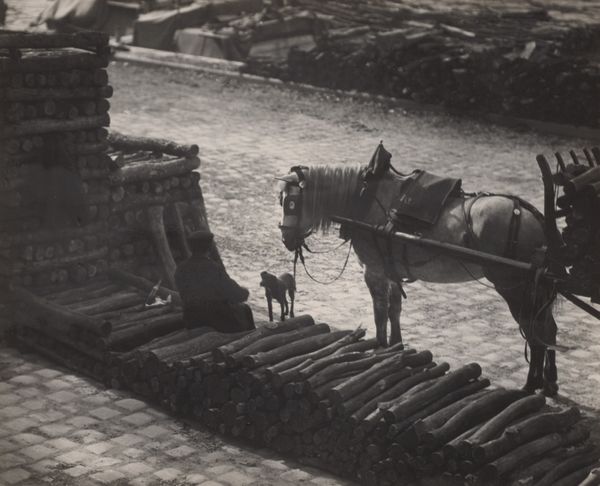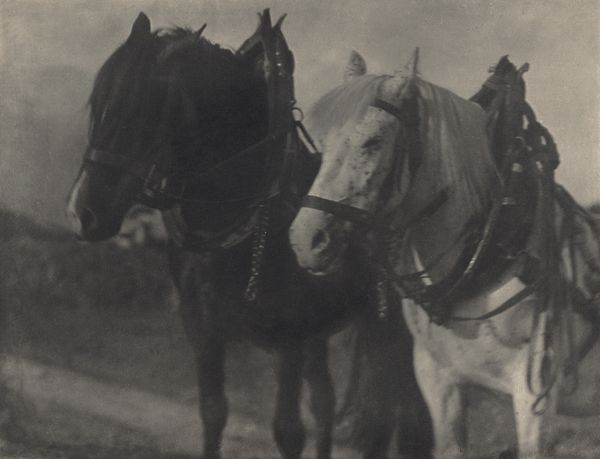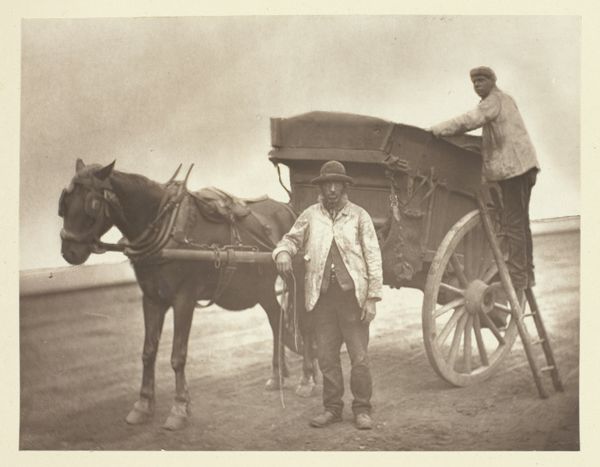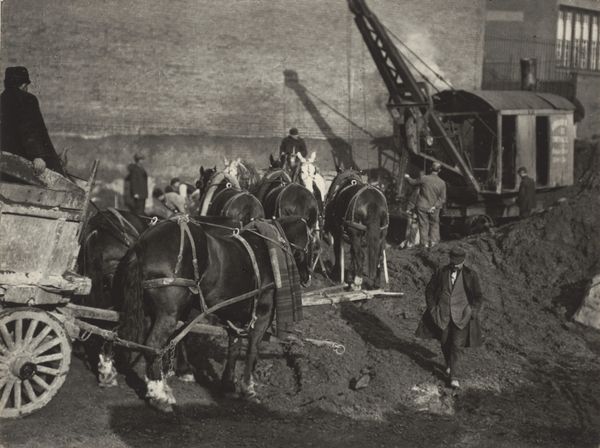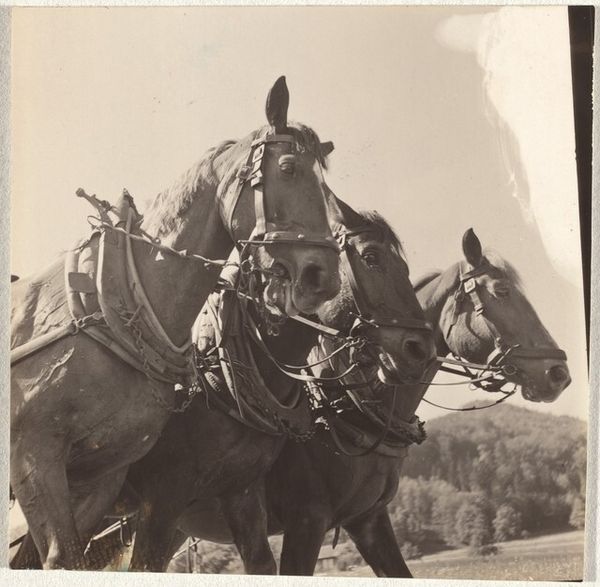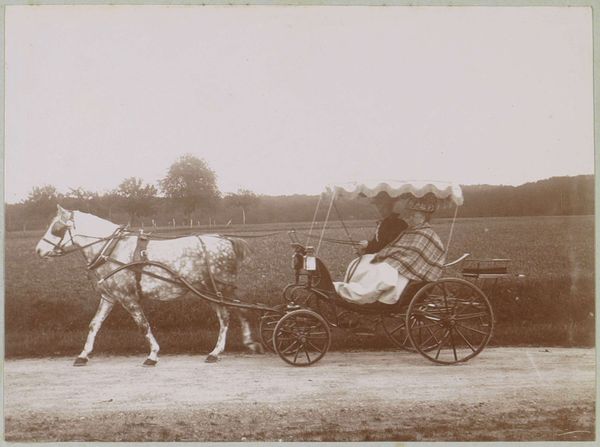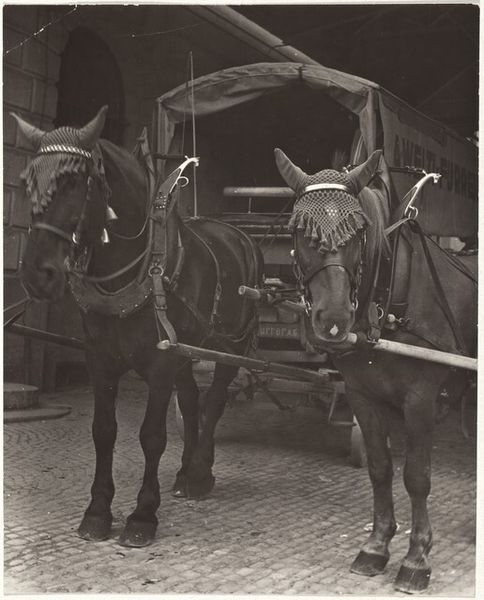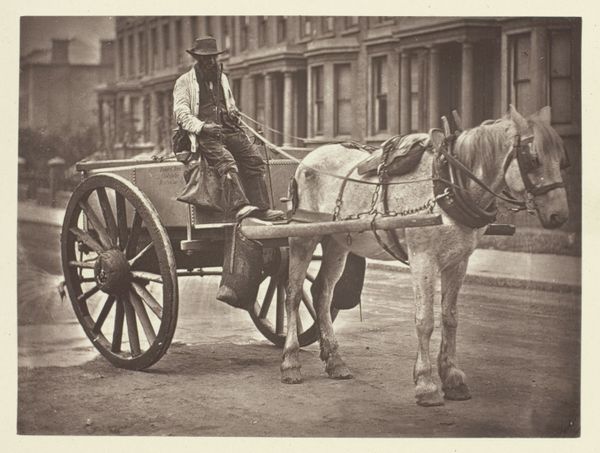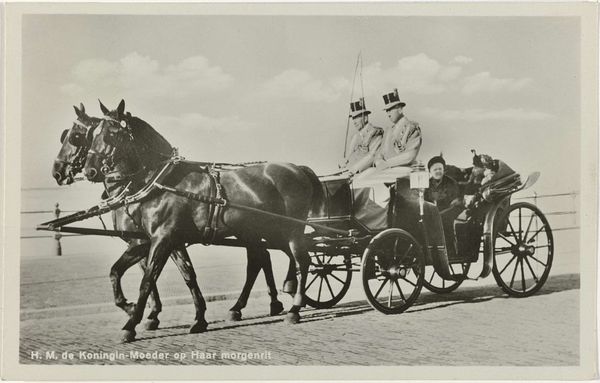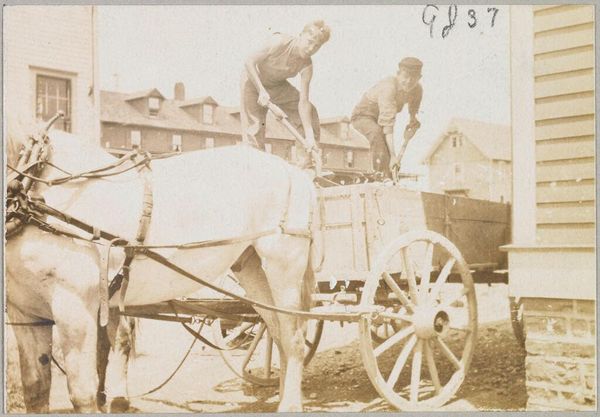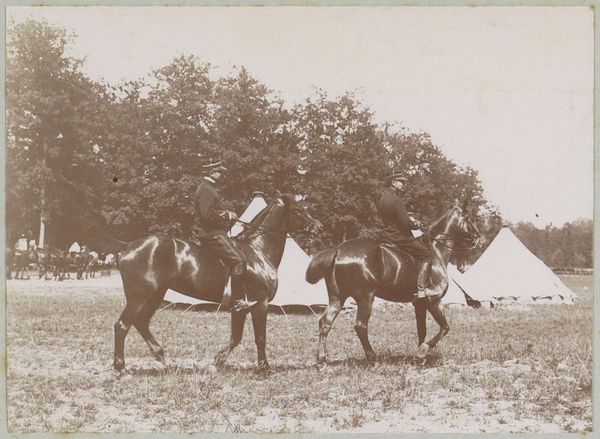
photography, gelatin-silver-print
#
landscape
#
street-photography
#
photography
#
gelatin-silver-print
#
realism
#
monochrome
Dimensions: sheet (trimmed to image): 9.2 × 11.3 cm (3 5/8 × 4 7/16 in.) mount: 34.1 × 27.6 cm (13 7/16 × 10 7/8 in.)
Copyright: National Gallery of Art: CC0 1.0
Curator: Looking at Stieglitz's "A Snapshot, Paris," likely captured between 1911 and 1934 using a gelatin-silver print, I'm immediately struck by its stillness. It's a moment of quietude in what I imagine was a bustling city. What’s your first impression? Editor: My first impression is of work, plain and simple. The cobbled ground, the piled logs, the burdened horse – there is no romanticization here. It’s a scene of animal and human labor. Curator: Yes, but look closer. There’s a tenderness. The man's hand reaching for the horse's face. It transcends just work; it's a shared moment, almost symbiotic, don’t you think? And captured with such intimacy—that’s Stieglitz's genius! Editor: Intimacy through whose lens? We see what Stieglitz wants us to see. What’s absent is equally important—where’s the client expecting their logs? Who benefits from this exchange of labor? It's crucial to acknowledge this image’s existence as a product of specific societal and economic conditions. Curator: Absolutely, context is king. But let’s not forget the material itself, this gelatin-silver print – the textures it coaxes out, that hazy almost dreamlike quality. Stieglitz championed photography as fine art, elevating these “snapshots” beyond mere documentation. Editor: Precisely, the transformation of raw material into “art” requires unpacking. This wasn't just about capturing a pretty scene. Think of the labor involved in producing gelatin-silver prints, from manufacturing chemicals to developing the image. The materials themselves contain histories of extraction and industrialization. Curator: And by presenting everyday life, as raw as it may be, Stieglitz invites us to reflect on our own human experience, to find beauty in the mundane. Perhaps it's a call to slow down, observe, connect... even with the animals who share our toil. Editor: I’ll concede that it holds an enduring quality – a visual record of human-animal partnership amidst demanding circumstances. It forces us to contemplate the material realities of the time and how images, seemingly simple, can mask the broader economic structure. Curator: A collaboration of lives captured as it was. Seeing it has stirred up some thoughts that'll stick with me for a while, a memory unearthed, maybe. Editor: Agreed. The value of something like this is in it is as a material trace of past labour and allows reflection and deeper questioning.
Comments
No comments
Be the first to comment and join the conversation on the ultimate creative platform.
